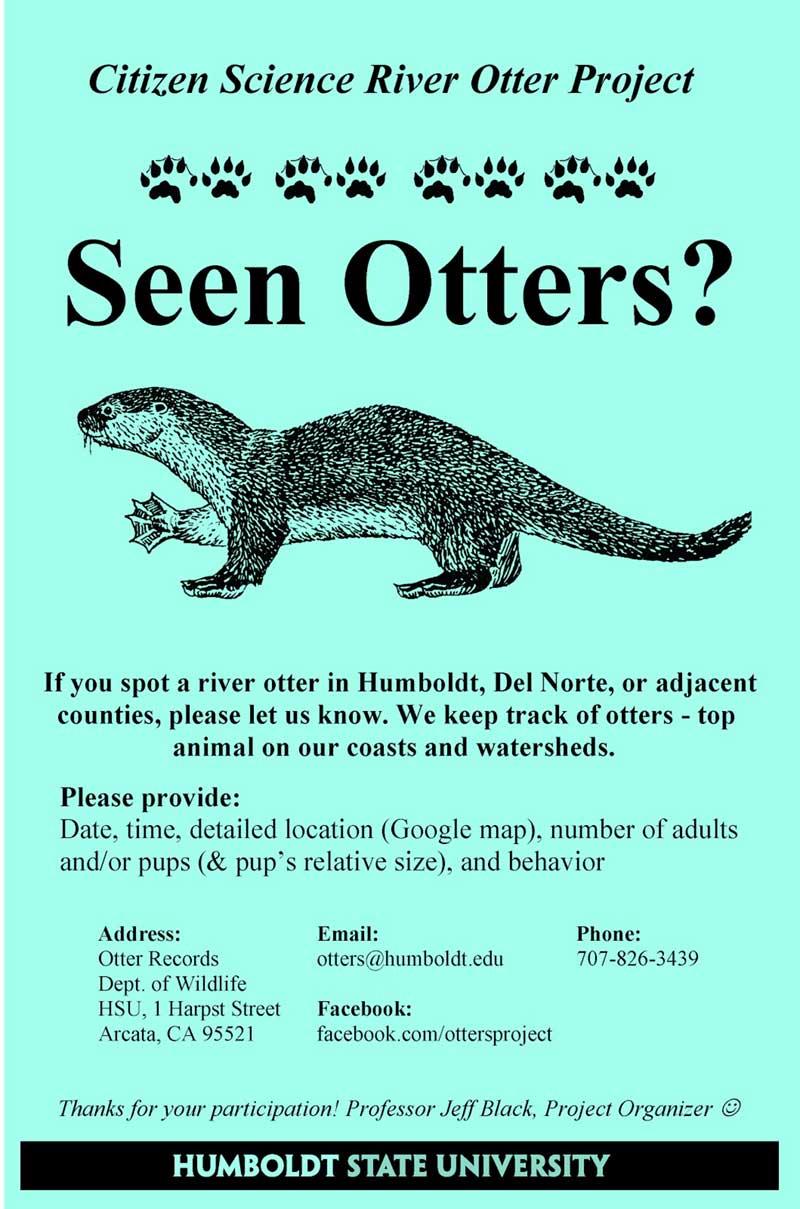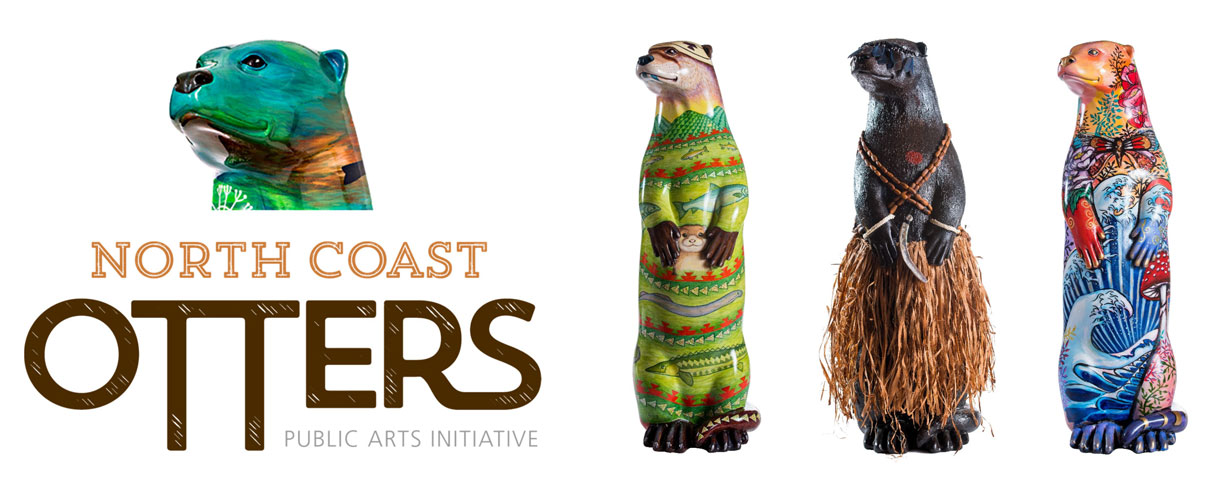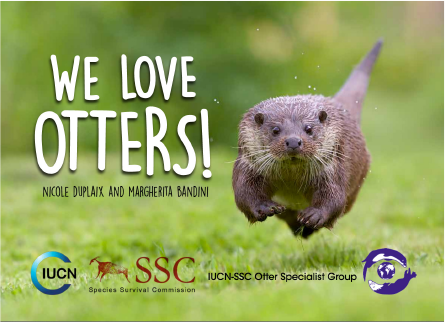Have you seen a wild river otter? You are invited to join the growing number of ‘wild otter spotters’ in our community. Just let us know where and when you see wild river otters when you are out enjoying nature.
“Whether reporting a mother otter and a half-size pup, a singleton, or a whole “bevy” of otters, every record is worth so very much!”
For over 20 years, thousands of community members, ‘citizen scientists,’ continue to report observations of wild river otters seen throughout Humboldt, Del Norte, and adjacent counties, making a long-term and wide-ranging study of our local river otters possible.
When you see wild river otters, please do send us your record ( email: otters@humboldt.edu, phone 707-826-3439 ), including:
- Date & Time
- Location
- Number of adults and smaller pups
- Otter’s behavior
For wild otter spotters

The river otter is a key bio-indicator of the health of our environment as they sit at the top of this water-based food chain. When their numbers struggle, we know that there is something wrong in the environment.
There are 13 types of otters in the world; 12 of which are listed as endangered or near-threatened; our river otters in northern California are making a comeback. Indeed, we hope Pacific Northwest habitats will continue to support wild river otters. The only way to know for sure is to monitor local otter families and singletons, and we need the help of the community’s citizen scientists to do that.
The goals of the study are:
- Establish a network of river otter observers
- Assess spatial and temporal variation in river otter distribution
- Assess spatial and temporal variation in pup production
- Conduct observational studies on river otter foraging
- Conduct diet assessments
- Assess home range and site faithfulness
With a bit of persistence, keen observers can watch river otters forage and play in the wild or detect signs of their presence. Signs include tracks, slides, and most importantly scat (otter poop). Otter scat, which smells 'ottery' or 'fishy' is known as otter 'spraint'. Remnants of the otter’s favorite foods can be found in their spraint; finding fish bones and scales, crab parts, or bird feathers allow us to determine what otters eat.
River otters typically travel alone, but there are at least six family groups living in habitats just a short drive from Cal Poly Humboldt. You may even observe our local river otters in shallow bays, lagoons, and coastal harbors where sea otters occurred in times past! Indeed, river otters may be seen throughout the North Coast and further inland in our clean water rivers and wetlands.

